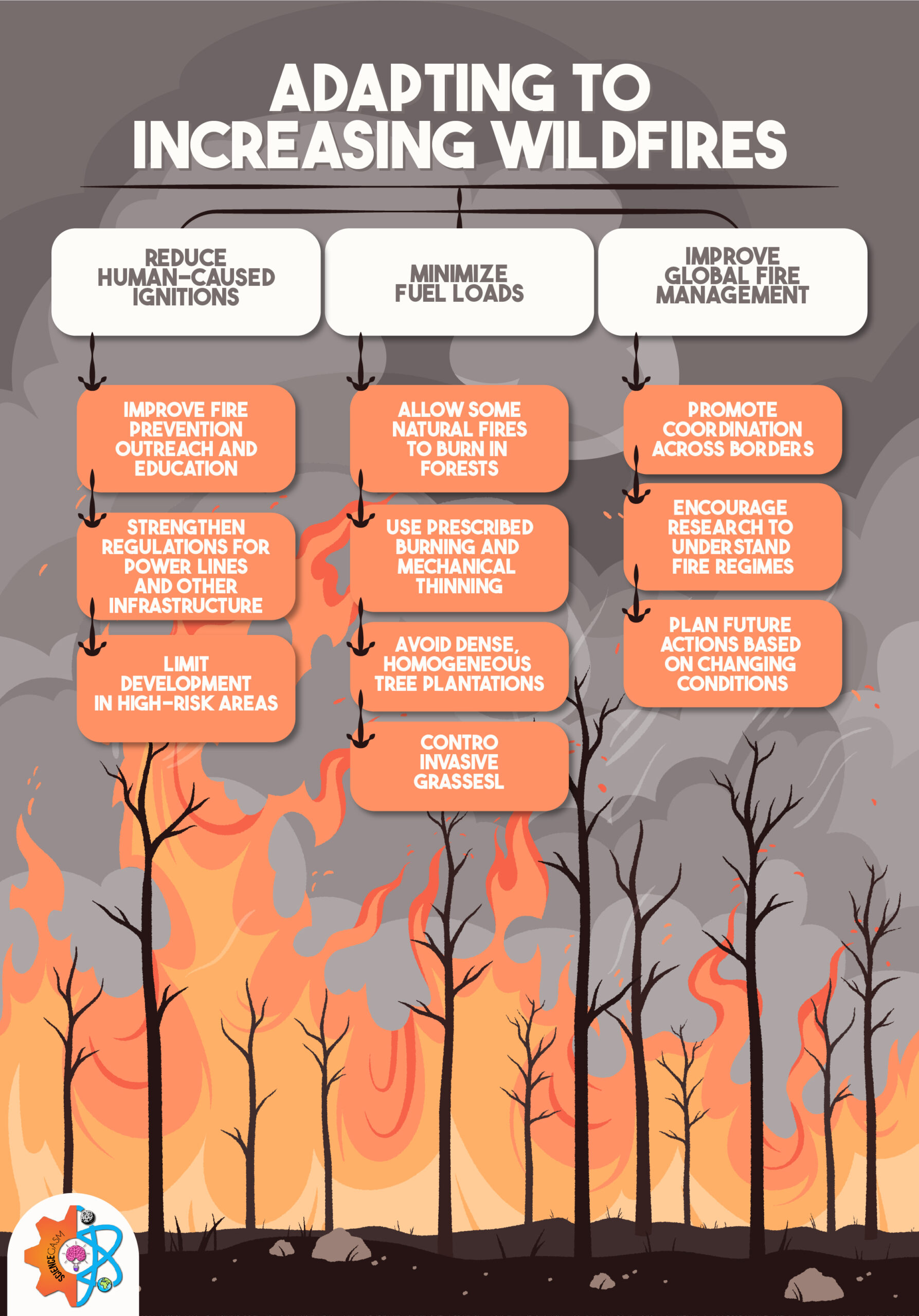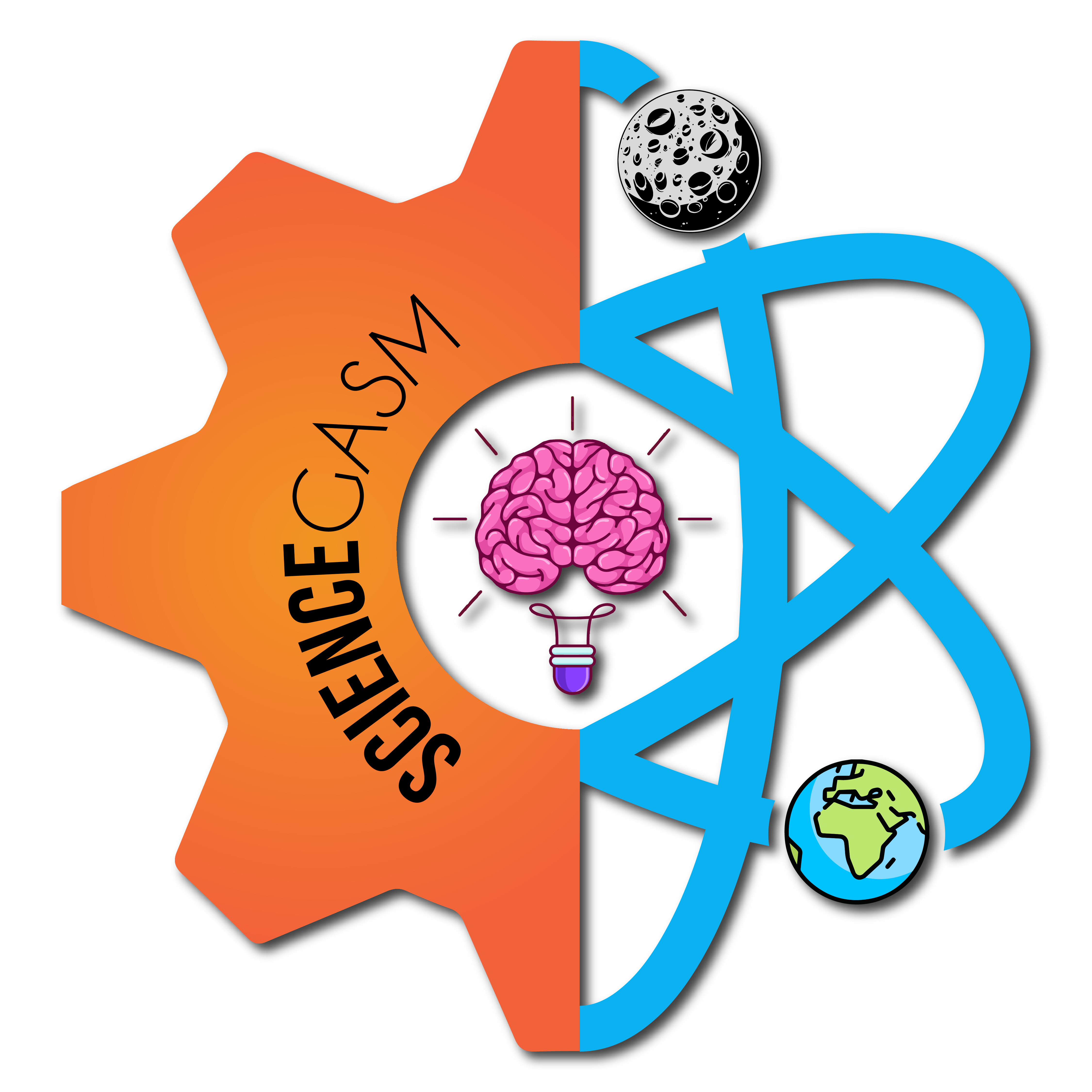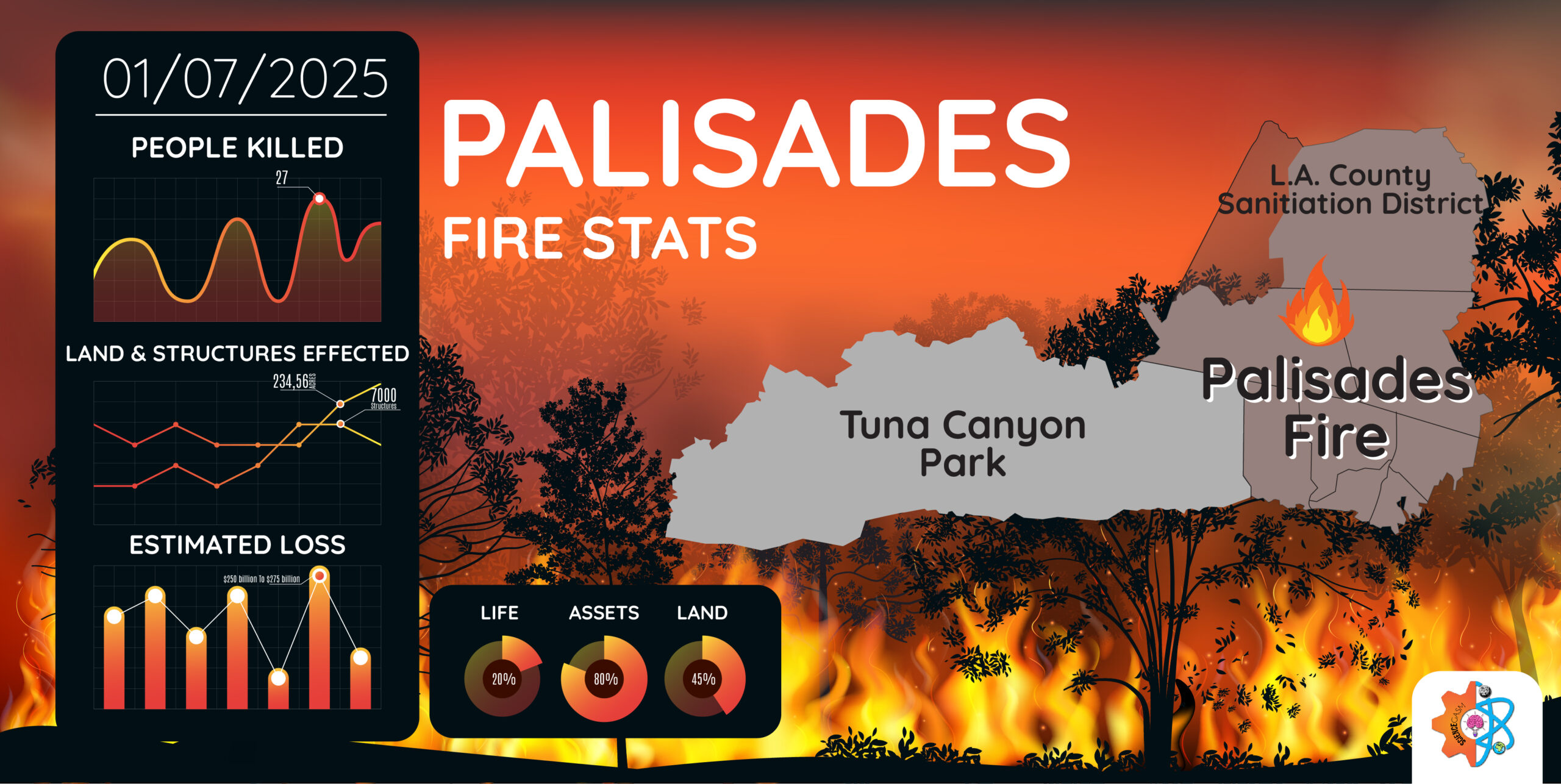
Los Angeles Fires
The Los Angeles fires finally attained a 100% containment today on 2/3/2025, according to Cal Fire, after almost a month of wrecking havoc in the most expensive neighborhood not only in the US but perhaps in the world. The fire started on 01/07/2025 and killed 27 people, affected 23,448 acres of Land, destroyed over 7000 structures, and caused a loss of between $250 billion and $275 billion according to some estimates. While experts are still trying to find the actual cause of this particular fire. Let’s delve into the depths a little bit and learn what wildfires are and how they erupt.
What Are Wildfires?
Wildfire is the term used to describe any unplanned and uncontrolled fire started in shrubs or forest. We hear about wildfires all the time in the news and it is usually associated with loss of life, homes, property, farmland, or forests. Often with billions of dollars worth of loss.
Causes of Wildfires: Natural and Human-Made
Natural Causes:
- Climate Change & Rising Temperatures
- Drought Conditions
- Lightning Strikes
- Mountain Pine Beetle Infestations
Human-Induced Causes:
- Fire Suppression Policies & Forest Mismanagement
- Expansion into the Wildland-Urban Interface (WUI)
- Power Lines & Electrical Failures
- Arson & Accidental Ignitions
- Agricultural Burns & Land Clearing
- Wildfire Smoke & Pollutants
- Stubble Burning
- Discarded Cigarette Butts
- Power Lines
- Other Causes (Sabotage, Traffic Accidents, Campfires, Terrorism, Explosions, Heat Objects, etc.)
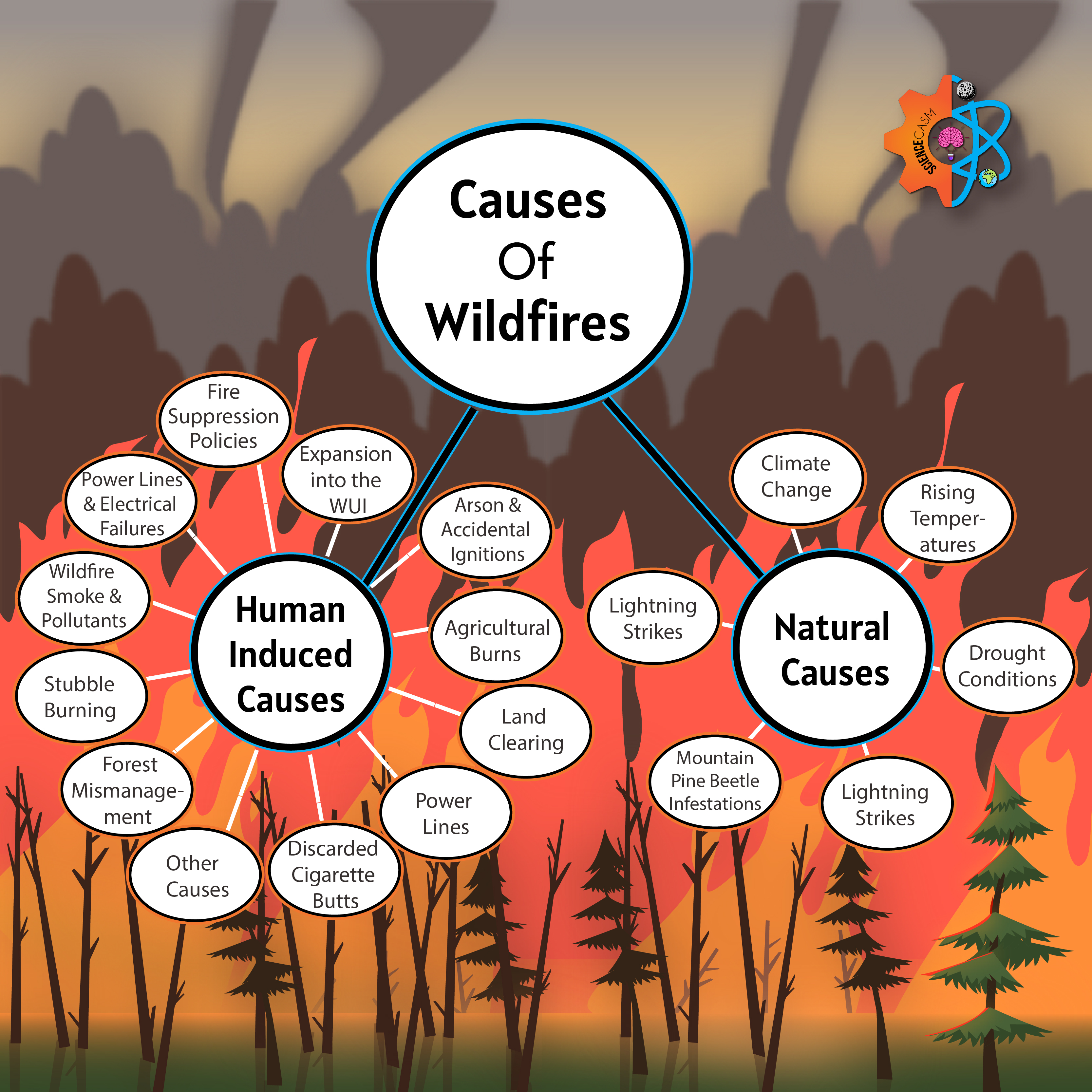
Historic Lessons from the Flames
If we analyze some historic wildfires there are certain lessons to be learned from them, particularly impacts focusing on economic, social, and environmental impacts. Wildfires from southeastern Australia, such as the 1983 Ash Wednesday Fires, 2003 Alpine and Canberra Fires, 2005/06 Grampians Fires, 2006/07 Great Divide Fires, and 2009 Black Saturday Fires.
Some key lessons from these wildfires include:
- Economic Impact: Wildfires cause significant financial losses, including property damage, business disruptions, and losses in agriculture and forestry.
- Human Casualties: The preservation of life is the highest priority, with devastating fires like the 2009 Black Saturday Fires resulting in 173 fatalities.
- Environmental Costs: Ecosystem services, such as water catchments and biodiversity, suffer long-term damage, and recovery takes years.
- Emergency Response & Mitigation: The effectiveness of response strategies, fire suppression techniques, and community preparedness efforts plays a crucial role in minimizing losses.
- Financial Recovery & Aid: Insurance, government assistance, and donations significantly impact how quickly affected communities recover.
A major takeaway is the importance of comprehensive wildfire management strategies, which include better prevention measures, economic loss assessments, and long-term recovery planning.
Wildfire
Wildfires have become more frequent and intense over recent decades, particularly along the U.S. West Coast due to drier climate cycles, precipitation changes, and fuel accumulation.
- 2018 Wildfires: California experienced its deadliest wildfire, the Camp Fire, which burned 153,336 acres, displaced over 50,000 people, and severely strained resources in cities like Chico. That same year, the Mendocino Complex Fire became the largest wildfire on record, burning over 459,000 acres. The Carr and Woolsey Fires further contributed to a total of $25 billion in damages.
- 2020 Wildfire Season: The U.S. recorded its worst wildfire season, with over 10.2 million acres burned. California surpassed its 2018 record, with the August Complex Fire, which started from 37 lightning-induced wildfires, burning over 1 million acres and causing at least $166 million in damages.
Overall, wildfire damages in 2018 and 2020 exceeded $40 billion, marking an unprecedented period of destruction.
Unknown Fire Causes
A study found that about 52% of wildfires initially had unidentified causes, but the study applied models to assign probable causes to many of them. It identified anthropogenic and natural causes of wildfires by maximum entropy method‑based ignition susceptibility distribution models. I know that this 1 yard long name has your mind boggled, but lemme break it down a bit. It means how likely different places or materials are to catch fire based on data like temperature, dryness, vegetation etc, and makes the fairest possible prediction without adding assumptions.
Wildfires are increasingly becoming more frequent and intense over recent decades, particularly along the U.S. West Coast due to drier climate cycles, precipitation changes, and fuel accumulation. Below is a figure outlining different effects and impacts of wildfires:
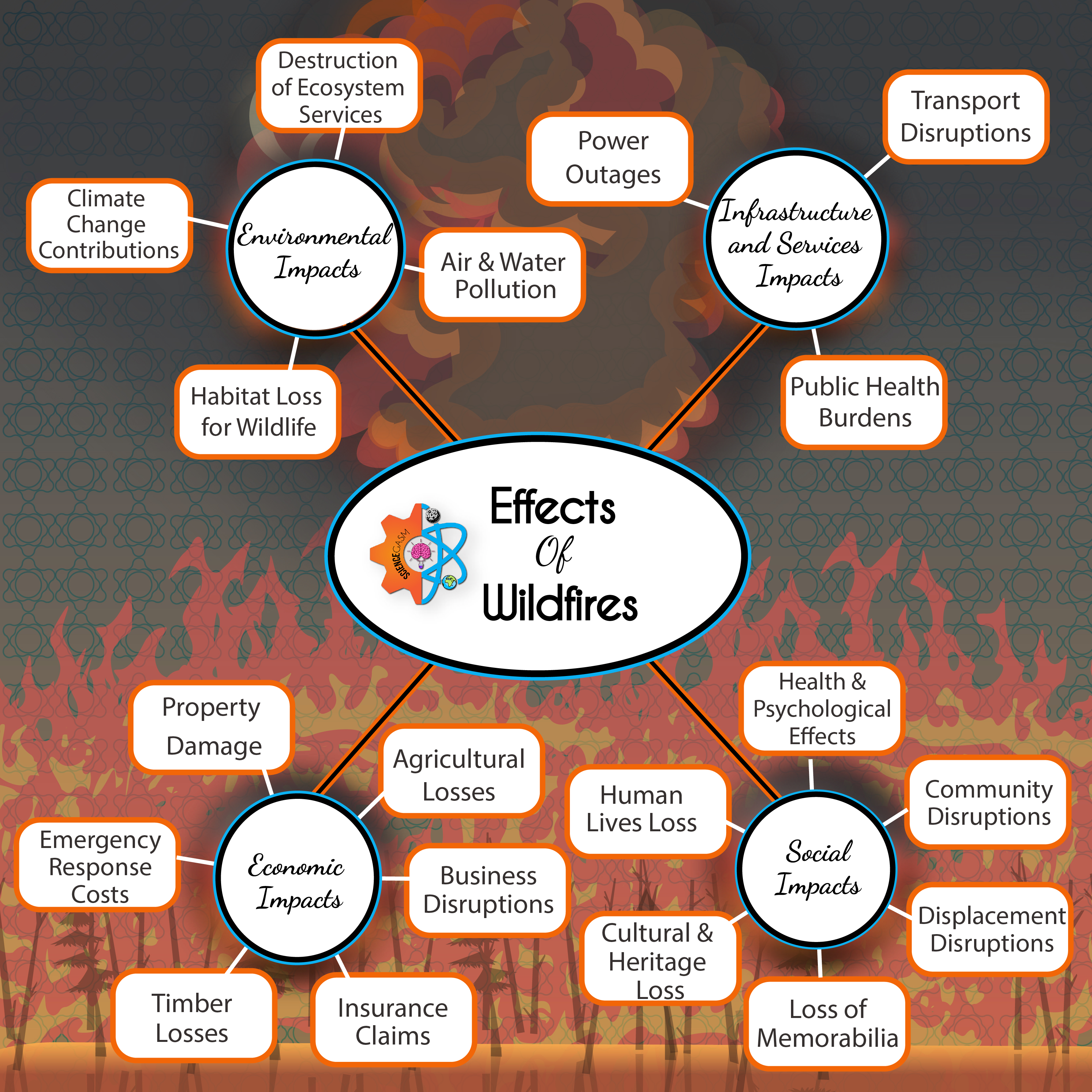
Factors Augmenting Wildfires
Below you will find two different graphs trying to explain the model of relationships between fire parameters ➡️1️⃣ Fire Spread2️⃣ Flammability3️⃣Probability of Fire 🆚their drivers ➡️ 1️⃣ Ignition 2️⃣ Fuel Continuity 3️⃣ Drought.
In addition, the graph on the right shows that once all thresholds have been crossed, the size of the fire is determined by the duration of the extreme fire weather and the availability of continuous fuels in the landscape.
Moreover, the flow chart is intertwined with the graph on the left to explain cause and effect of different factors.
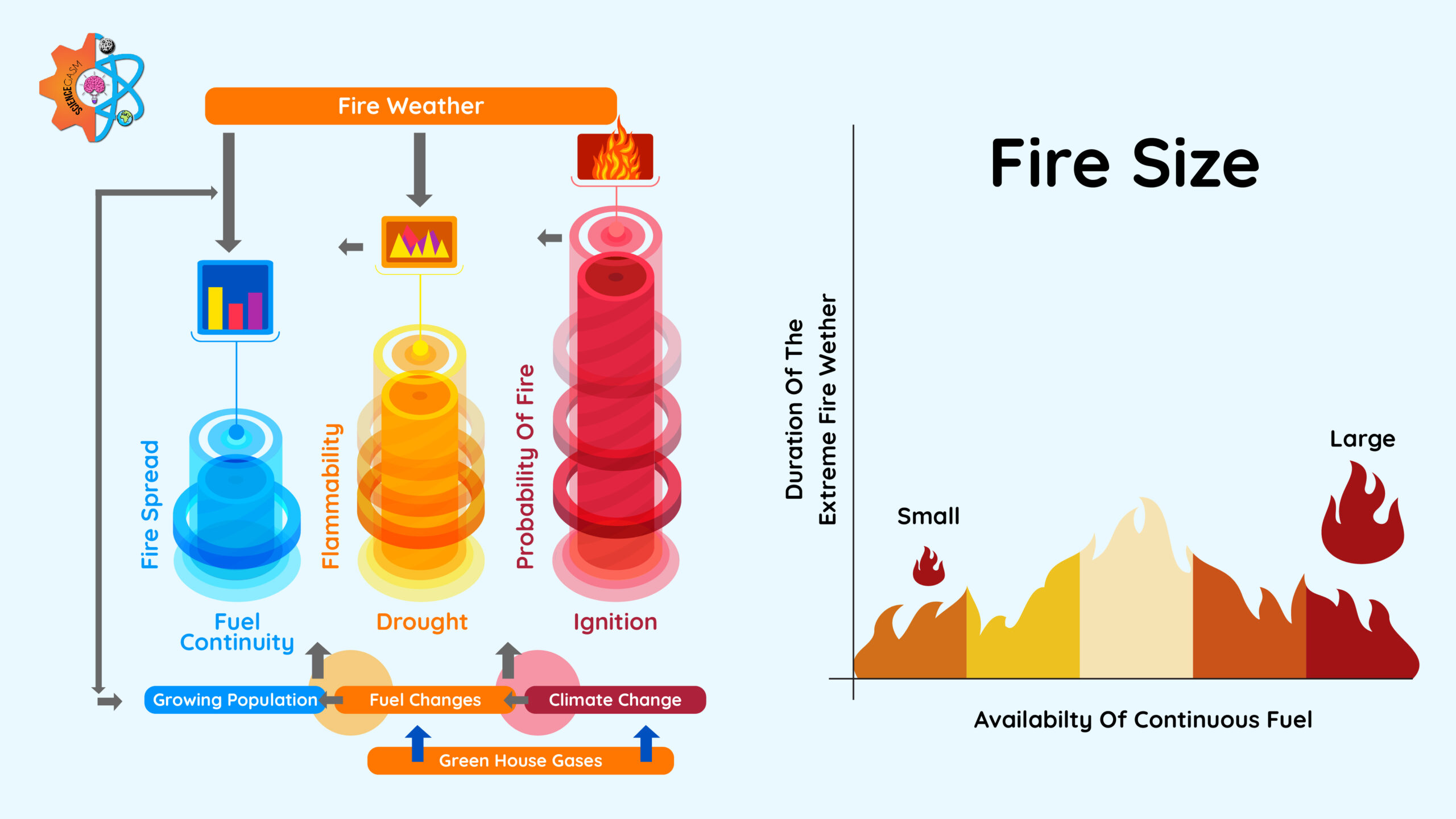
Preventing Wildfires: Strategies and Solutions
There are a lot of different prevention strategies which are employed to reduce the impacts of wildfires, some of them are as follows:
Integrated Fire Management (IFM)
IFM which seems to be a fancy term is, in fact, a fairly simple concept. Lemme explain, so it is a strategy which combines prevention, suppression, use of fire, and post-fire actions (like controlled fires) to decrease risks and increase benefits of fire in different ecosystems. Just like any plan this plan also needs continuous monitoring and feedback to evaluate and correct the mistakes and make the process better. The following flow chart explains the strategy with an example:
Fuel Management
In this strategy we reduce the stuff which catches fire (flammable material) in the fire prone regions. How do we do it? Vegetation is fuel so one way is to clear excess vegetation. If that is not possible we replace the vegetation with less flammable ones. There are several ways to remove the vegetation:
- Grazing
- Mechanical removal
- Controlled burning
- Selective herbicide
Public Awareness
We need to educate people! hands off! The best investment a government can make is in its human capital. This will not only educate people to “live with fire” but it will also give them skills to protect their homes, promote safe behaviors, and create a more prepared wildland-urban interface (this where forests meet cities/towns).
Landscape Planning and Restoration
As we are talking about planning for fires, it is also worth mentioning that we need to plan our forests as well. Planning a forest in this context means that we need to plant and cut down trees by keeping one more thing in mind while we plan this, and that one thing is fire risk!
Therefore, this means that we plan the forest layout by including fuel breaks, leaving space between tree groups, adding natural barriers such as streams or trails, by managing the underbrush (dead wood, dry leaves etc.) and using technology like Global Information Systems (GIS) to make risk maps which help us identify risk prone areas on a map so we can easily pinpoint areas which are more prone to fire.
Use of Science to develop policy
Integrating new technology, AI, and promoting research and development into public policy helps to evaluate the policy’s effectiveness. Statistical analysis and foresight studies can be used to provide feedback and improve response. This can help in being proactive rather than just reacting as we do in an emergency response. Thus, including multi-disciplinary teams ( for example: urban planning, forestry, agriculture, environmental engineering) and ensuring good coordination can help come up with better policies.
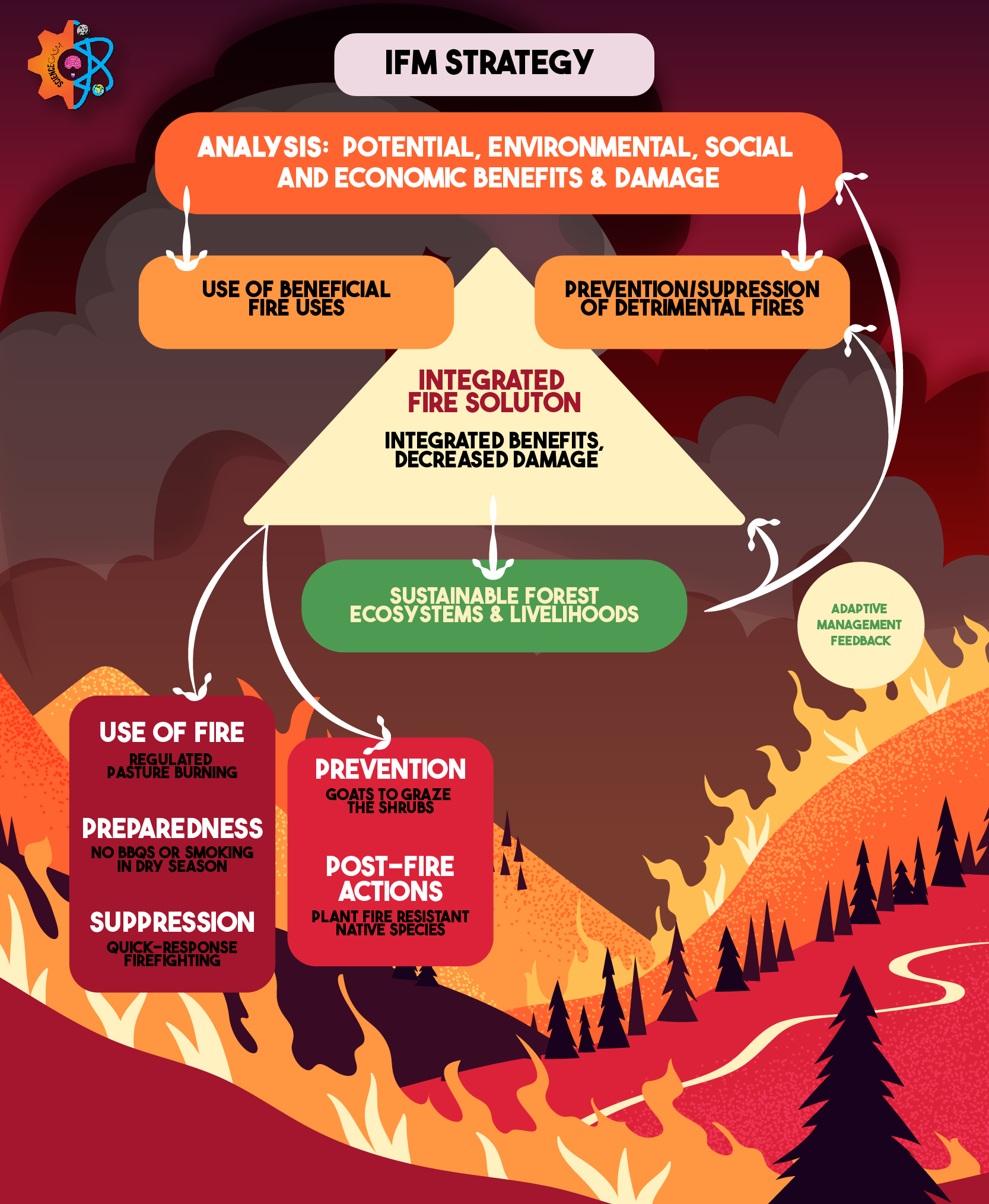
Adapting to a World with Increasing Wildfires
The following statistics will help shed light on the global effect of wildfires:
- A study found that since 2000, powerline failures alone have caused fires over ~200,000 hectares, about 5 times more than in the previous 20 years.
- Another study showed that California’s population increased by 6 million since 2000. This surge in population and development contributed to the severity of the 2017 Tubbs Fire killed 22 people and destroyed 5600+ structures, while the 1964 Hanly Fire (same area) caused zero fatalities and destroyed 84 structures.
- Researchers also found that Western US coniferous forests, due to fire suppression, now have increased ladder fuels and are more prone to high-intensity crown fires (this is the type of fire which burns on treetops rather than the grass at the ground).
- Building on this, another research effort showed that massive fires have become more common in exotic tree plantations; such as in Chile and Portugal.
- Fire seasons are becoming longer globally, found Westerling and Flannigan in their efforts on global impacts of wildfires.
On top of the statistics, I came up with a summary of adaptation in the flow chart below👇
